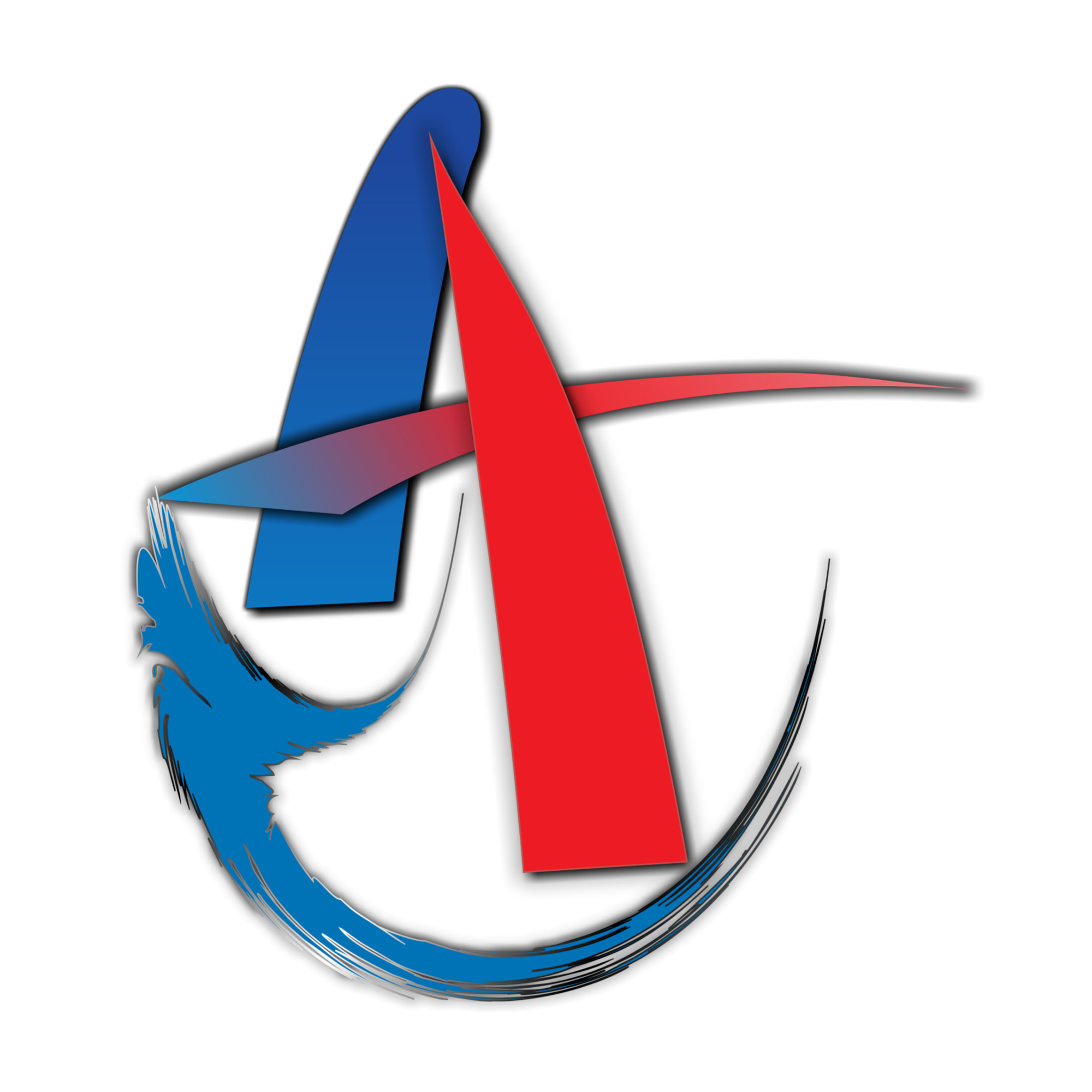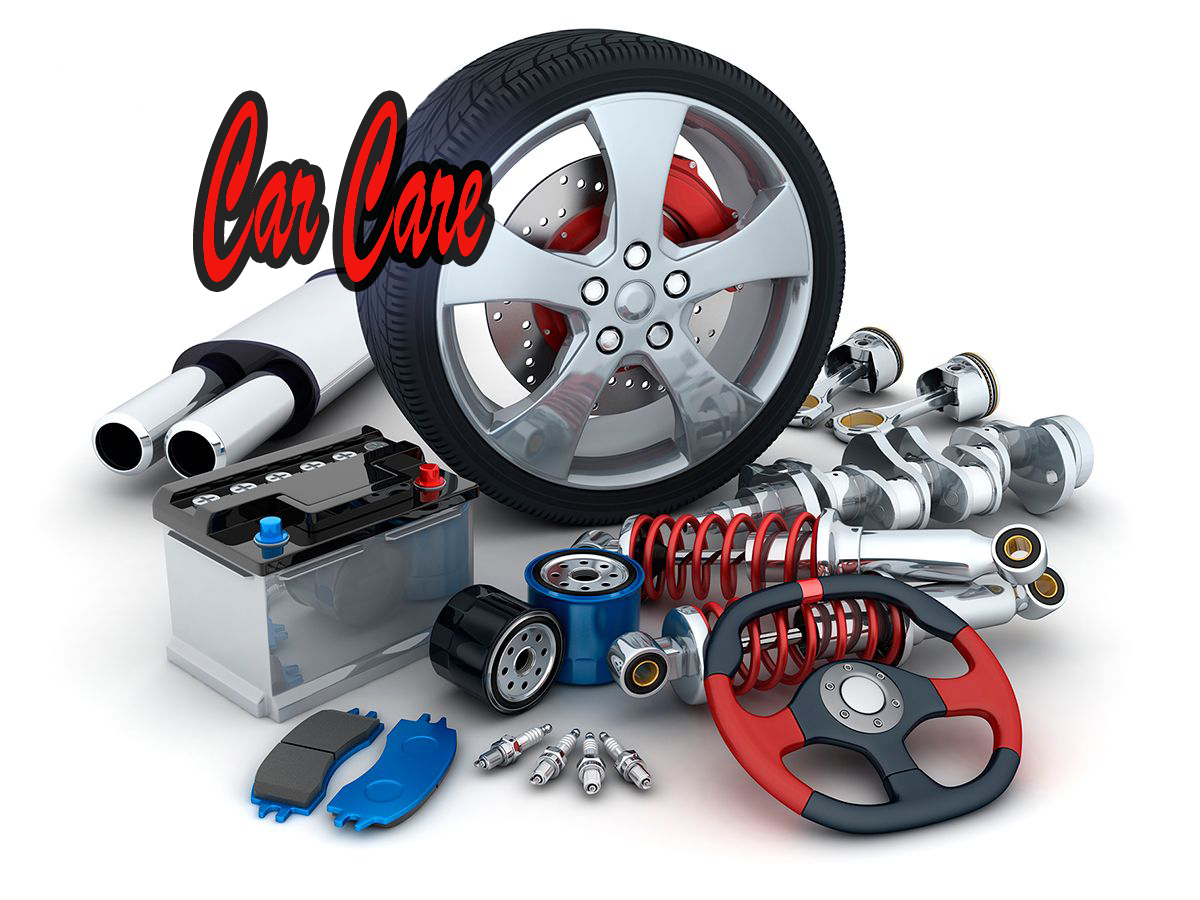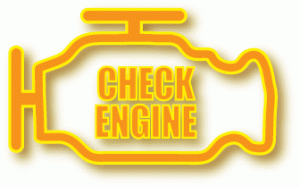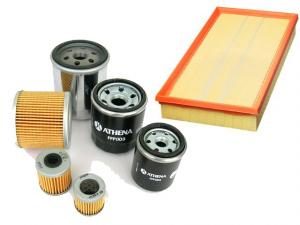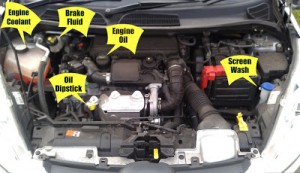This care care tips are here to aid you in information you may need in the smooth daily running of your car.
Battery Maintenance
Your car’s battery is the heart of its electrical system and the chief cause of winter weather start-up woes. In cold weather, the battery loses about half its strength while the demands on the battery increase. Low temperatures reduce the battery’s engine-cranking power, and by thickening the engine oil, they also make it more difficult for your engine to turn over. Cold fuel doesn’t vaporize well, which adds to the difficulty.
It is extremely important to have your car’s battery checked by a trained technician regularly. A battery check will include an examination of cable connections for cleanliness and tightness. Loose or corroded connections can dramatically diminish your car’s starting power; and if the connections grow loose or crusty enough, they can shut off your car’s electrical flow entirely and leave you thinking you have a dead battery.
dramatically diminish your car’s starting power; and if the connections grow loose or crusty enough, they can shut off your car’s electrical flow entirely and leave you thinking you have a dead battery.
Low temperatures also reduce the efficiency at which a battery is recharged.
Cold driving conditions frequently require the use of lights, defrosters and wipers for extended periods while driving at slow speeds. This additional load requires the charging system to work properly so that it sufficiently charges the battery the next time you start your car’s engine. For this reason, your service technician should also check your battery’s charging system and voltage regulator, and inspect your vehicle’s alternator to ensure that all components are operating properly.
Lead-acid batteries for automotive use are made with slightly different construction techniques, depending on the application of the battery. The “flooded cell” type, indicating liquid electrolyte, is typically inexpensive and long-lasting, but requires more maintenance and can spill or leak. The other typer is maintenance-free batteries. The term “maintenance-free” can be misleading – as these batteries also do require some attention to maintain their cleanliness and efficiency. More on battery maintenance ….
Check Engine Light
When you start your vehicle, the check engine light comes on momentarily to test the engine/emission control system and bulb. The system is self-diagnostic and the light is a way to communicate trouble. The system is designed to function in a “limp home” mode when trouble occurs and the light comes on – and stays on. However, take your vehicle to an authorised car dealer right away. The technicians have specialised tools and training to access trouble codes stored in the vehicle’s memory each time the light is illuminated. This is a sophisticated system, with the ability to detect and store information about even the slightest changes.
One item which may seem insignificant but which can cause the system to detect trouble is a loose or missing fuel filler cap. Remove the cap, then tighten it until it clicks. If you are unsure whether the loose cap was the cause or if the light stays on, visit your dealer.
The light also can come on if you have installed electrically powered accessories (such as a radar detector or keyless entry system) that aren’t compatible with your vehicle’s systems. If the light comes on and such accessories are installed.
Driving long distances with this light activated could result in a larger problem down the road. It is safest for you and your passengers to learn what is going on with your vehicle sooner rather than later so that you can take the necessary measures to fix the issue.
For more information, check your Owner’s Manual or Read More …..
Clean Filters, Improved Performance
Road dust, fuel system condensation and engine-oil sludge are unseen enemies that can cause harm to your engine, or prevent it from working at its best. Your best defence? Visit your dealer for genuine filter replacements to help ensure that your engine lives a healthy, high-mileage life. Refer to your vehicle’s Warranty and Maintenance Booklet for recommended maintenance schedules.
Oil Filters
Motor oil circulates through your engine to lubricate all the moving parts. Along the way, dirt, grit and fine metallic and carbon particles contaminate motor oil and, if improperly filtered out, may ruin your engine. Today’s high-detergent oils are formulated to suspend contaminants until they can be effectively trapped by the oil filter. Regularly changed oil filters protect your engine by removing the suspended particles from your motor oil.
Fuel Filters
Today’s sophisticated fuel injection systems demand clean fuel in order to run smoothly. From the gas tank to your engine, fuel can pick up contaminants like dirt and condensation. If these contaminants are not properly filtered out they will cause reduced engine performance, rough idling and may eventually damage the sensitive fuel injection components. Fuel filters changed using the recommended maintenance schedule can help you avoid expensive repairs.
Air Filters
Your engine needs a great deal of air to run properly. If air is not properly filtered, dust and other suspended particles get into the combustion chamber where they may become lodged between the piston and cylinder wall, causing wear. This may result in loss of acceleration, decreased power and lower gas mileage.
Remember, ALWAYS insist on genuine Filters – your best defence against the most abusive elements.
Five 60-Second Fluid Checks
Properly maintaining your car’s fluid levels is an easy way to help ensure that your car runs smoothly between service visits.
Before checking, always stop the engine, remove the key from the ignition switch, set the parking brake and let the engine cool down completely. Take care not to spill any engine oil, engine coolant, brake fluid or any other fluid on hot engine components.
Use your Owner’s Manual as a guide for more details and to locate specific engine parts.
Engine Oil
When: Every Fuel Stop. Park your car on a level surface and stop the engine. Pull out the dipstick, wipe it clean, and insert it again until it stops. Pull out the dipstick again and check the oil level on it. If it is below the lower level, add oil to bring it up to the upper level. Important: Use only engine oil with the grade and viscosity recommended in your Owner’s Manual. Read More …
Coolant
On every Fuel Stop, check your car’s coolant level on the outside of the reservoir while the engine is cool. If the level is close to or lower than the “LOW” mark, add coolant up to the “FULL” mark. If the reserve tank is empty, remove the radiator cap (Do not open when the radiator is hot!) and refill as required. After filling the reserve tank and the radiator, reinstall the caps and check that the rubber gasket inside the radiator cap is in the proper position. Important: Use the coolant recommended in your Owner’s Manual only. Use of other coolants may result in corrosion.
Automatic Transmission Fluid
On a monthly basis (Automatic transmission equipped models only) drive several kilometres to raise the temperature of your car’s transmission fluid up to normal operating temperatures (60 to 80 degrees is normal). Park on a level surface and set the parking brake. Shift the selector level in each position. Then shift it in the “P” position, and run the engine at idling speed. Pull out the dipstick and check the fluid level on the gauge. If it is below the lower level on the “HOT” side, add the recommended automatic transmission fluid up to the upper level. Important: If you don’t have time to warm up the automatic transmission, check to see that the fluid level is between the lower level and the upper level on the “COLD” side. If it is below that range, add fluid up to the upper level. Be careful not to overfill.
Manual Transmission Oil
On a monthly basis (Manual transmission equipped models only) park your car on a level surface and stop the engine. Pull out the dipstick, wipe it clean, and insert it again. Pull out the dipstick again and check the oil level on it. If it is below the lower level, add oil to bring the level back up to the upper level.
Brake Fluid
On a monthly basis check the fluid level on the outside of the reservoir. If the level is below “MIN,” you need your mechanic to check if the brakes are worn out or you have a leak. But temporarily add the recommended brake fluid to “MAX”.
Important: Use only brake fluid from a sealed container.
Never mix different brands of brake fluid together. Brake fluid absorbs moisture from the air. Any absorbed moisture can cause a dangerous loss of braking performance. Take care not to splash brake fluid over any painted surfaces or rubber parts, as damage may result. If your vehicle requires frequent refilling, there may be a leak. Have the vehicle checked by your mechanic.
Tyre Wear / Rotation / Replacement / Temporary Spare Tire Operation
We all know that tires wear. There are certain things you, as an owner, can do to help minimize this wear.
Keep your tires properly inflated. This is perhaps the single most important thing you can do. Information on correct tire inflation pressure is provided in your owner’s manual and on a placard on the driver’s door pillar. How often you check your tire inflation is up to you. As a rule of thumb, tires should be checked every time you fill your car with gas. Remember that tires should be checked when cold since tire pressure will increase as the tires warm up.
Rotate your tires regularly. These are recommended intervals only. Your actual driving conditions may warrant more frequent rotation. Factors such as road surfaces, driving techniques/habits, vehicle loading, and weather, to name just a few, can all have an effect on tire wear.
Tire Replacement. The wheels and tires are important and integral parts of your vehicle’s design; they cannot be changed arbitrarily. The tires fitted as standard equipment are optimally matched to the characteristics of the vehicle and were selected to give the best possible combination of running performance, ride comfort, and service life. It is essential for every tire to have a size and construction as well as a speed symbol and load index matching those shown on the tire placard. Using tires of a non-specified size detracts from controllability, ride comfort, braking performance and speedometer and odometer accuracy. It also creates incorrect body-to-tire clearances and inappropriately changes the vehicle’s ground clearance. All four tires must be the same in terms of manufacturer, brand (tread pattern), construction, and size. You are advised to replace the tires with new ones that are identical to those fitted as standard equipment.
For safe vehicle operation, its is recommended that you replace of all four tires at the same time for all AWD cars . WARNING: All four tires must be the same in terms of manufacturer, brand (tread pattern), construction, degree of wear, speed symbol, load index and size. Mixing tires of different types, sizes or degrees of wear can result in damage to the vehicle’s power train. Use of different types or sizes of tires can also dangerously reduce controllability and braking performance and can lead to an accident. Use only radial tires. Do not use radial tires together with belted bias tires and/or bias-ply tires. Doing so can dangerously reduce controllability which can result in an accident.
Temporary Spare Tire.
WARNING: Never tow a trailer when the temporary spare tire is used. The temporary spare tire is not designed to sustain the towing load. Use of the temporary spare tire when towing can result in failure of the spare tire and/or less stability of the vehicle and may lead to an accident.
CAUTION: Never use any temporary spare tire other than the original. Using other sizes may result in severe mechanical damage to the drive train of your vehicle. The temporary spare tire is smaller and lighter than a conventional tire and is designed for emergency use only. Remove the temporary spare tire and re-install the conventional tire as soon as possible because the spare tire is designed only for temporary use. Check the inflation pressure of the temporary spare tire periodically to keep the tire ready for use. The correct pressure is 60 psi (420 kPa, 4.2 kgf/cm2).
When using the temporary spare tire, note the following:
– Do not exceed 80 km/h (50 mph).
– Do not put a tire chain on the temporary spare tire. Because of the smaller tire size, a tire chain will not fit properly
– Do not use two or more temporary spare tires at the same time.
– Do not drive over obstacles. This tire has a smaller diameter, so road clearance is reduced.
Test Your Tire Care Know-how
Make regular tire care one of your New Year’s resolutions! Find out how much you know about proper tire care by taking this test. The answers appear at the bottom.
True or False:
 1.Your brakes stop the wheels, but the tires stop the car.
1.Your brakes stop the wheels, but the tires stop the car.
2.Tire pressure should be lowered in the winter.
3.In the tire size “P195/70R14,” the number 14 means it is a radial tire.
4.A tire with too little air pressure will wear more on the outside of the tread.
5.Tires are not considered safe when the tread is less than 1/16″ thick.
6.Overloading a car has the same effect as having under-inflated tires.
7.Every time a tire screeches, the potential mileage is reduced.
8.The best time to check the pressure in your tires is after a long trip.
9.Worn tires are more likely to “hydroplane.”
10.While driving, if you think you have a flat tire, pull off the road immediately.
Answers:
1.True. This is why tire care is so important. The control of your car is only as good as the tires’ contact with the road.
2.False. Tire pressure usually lowers itself in winter — dropping about one pound for every 10 degrees the temperature falls. Check tires regularly, particularly during the winter months, to ensure that the proper pressure is maintained.
3.False. The letter “R” in the label means the tire is a radial. The number “14” indicates the rim diameter is 14″.
4.True. Too little air will cause excessive wear on the outside of the tread. Too much air pressure will cause undue wear on the middle of the tread.
5.True. Many states have minimum tread depth laws that reject tires with tread worn below 1/16 of an inch in two or more adjacent grooves. The tire is considered worn out.
6.True. Most people know that driving with underinflated tires causes excess tread wear as well as making the tire prone to failure. But most people don’t realize that overloading their car’s tires has exactly the same effect.
7.True. The driver who feels it is necessary to “peel out” from a stop sign or squeal around a corner potentially has erased hundreds of miles from the tread life of the tire.
8.False. Tire pressure will increase while driving so it is important to check tire pressure when tires are “cold” — in the morning or BEFORE starting a trip. Recommended tire pressure is always expressed as “cold tire pressure.”
9.True. A tire’s tread grooves are designed to evacuate water from under the tread. If tires are worn, they are more likely to “hydroplane.” This means they surf along on a film of water just like a water skier.
10.False. It is important to come to a gradual stop if you believe you have a flat tire. The driver should not pull off the road until he finds a safe place. It’s better to ruin a tire than risk an accident.
Wiper Care
You might take them for granted — until it rains, and suddenly your safety depends on them. Windshield wipers always need to stay in top condition because you never know when you’ll need them to help you see the road.
Wipers take a beating from extreme temperatures, acid rain, hail stones and sand. The rubber can crack, split, tear, become contaminated with road film or chemicals or warp from long exposure to heat, cold. Improvements are being made in blade materials, but air pollution still takes its toll.
You can clear up many windshield problems by replacing the blades. If water beads up on the glass, or if wiper action creates a hazy, oily film, clean the glass and replace the blades. Beading and hazing are most often caused b y car wax build-up or driving behind a vehicle that was losing brake fluid or engine oil. If wipers leave streaks or “skip” on each stroke, the arm may be bent or applying incorrect pressure. Blades and arms should be inspected every four to six months.
y car wax build-up or driving behind a vehicle that was losing brake fluid or engine oil. If wipers leave streaks or “skip” on each stroke, the arm may be bent or applying incorrect pressure. Blades and arms should be inspected every four to six months.
Meanwhile, every time you wash your car (weekly, hopefully), clean the rubber blade with a mild detergent and rinse with water. You’ll remove most pollutants attacking the rubber, help increase blade life and reduce windshield smearing. If taking a rear wiper-equipped car through a commercial car wash, temporarily tape the rear wiper to the glass to avoid damage during the wash.
Towing a AWD (All Wheel Drive)
AWD vehicles e.g Subaru STI with manual transmissions can be towed with all four wheels on the ground and the transmission in neutral.
Please refer to your owner’s manual for additional important information on towing vehicles with all four wheels on the ground.
Manual Transmission Models
All-Wheel Drive vehicles can be towed with all four wheels on the ground in neutral or with all four wheels off the ground on a trailer with the transmission in gear. Never attempt towing with only two wheels on the ground or two wheels on a dolly. Front-Wheel Drive vehicles can be towed with all four wheels on the ground in neutral or with the two front wheels off the ground.
Automatic Transmission Models
All-Wheel Drive vehicles cannot be towed with any wheels on the ground. The vehicle can only be towed on a trailer with all four wheels off the ground and the transmission in park. Front-Wheel Drive vehicles can be towed with front wheels off the ground or all four wheels off the ground and transmission in park.
